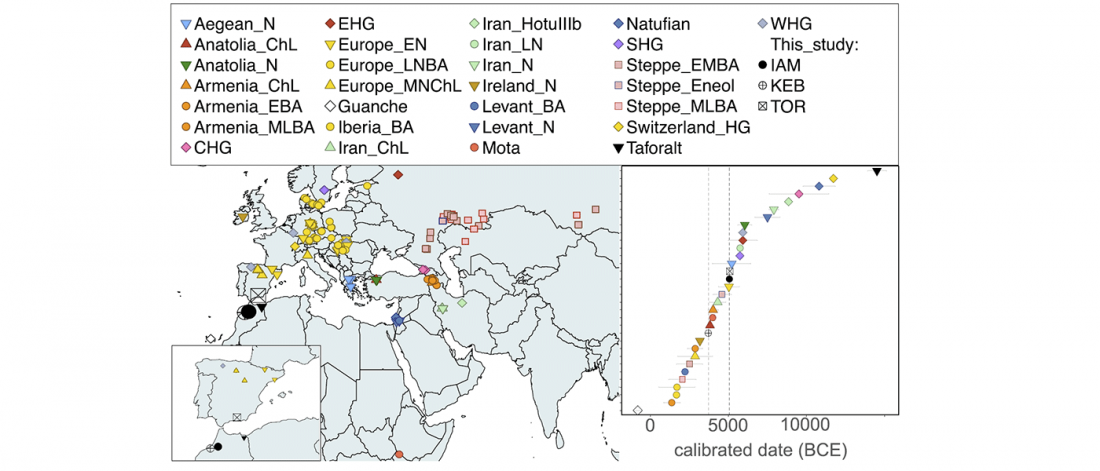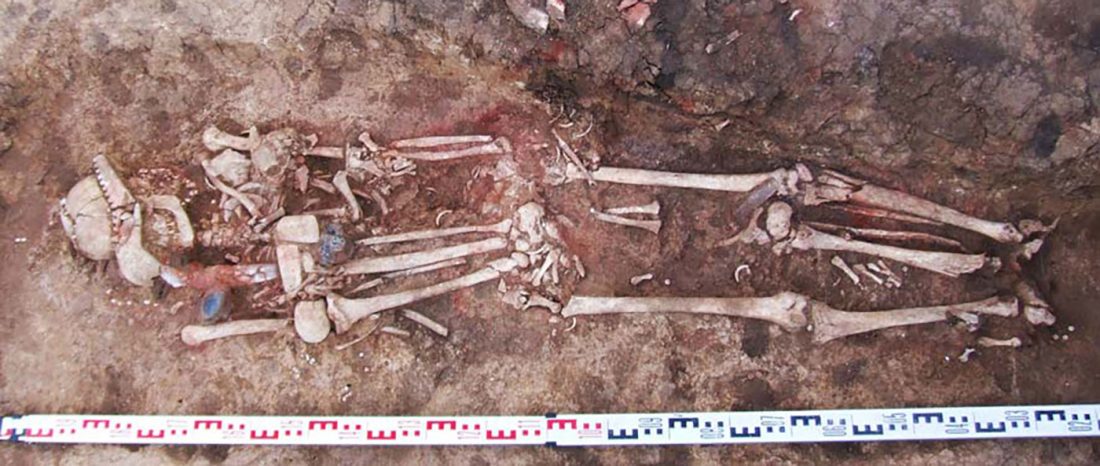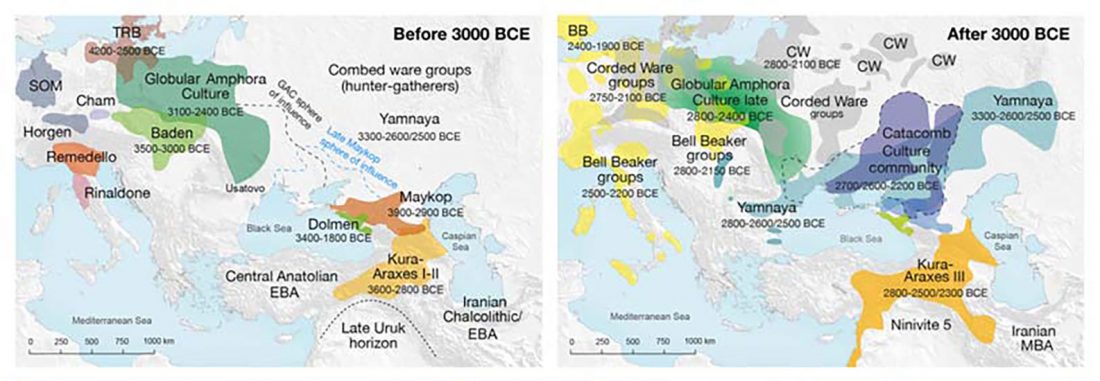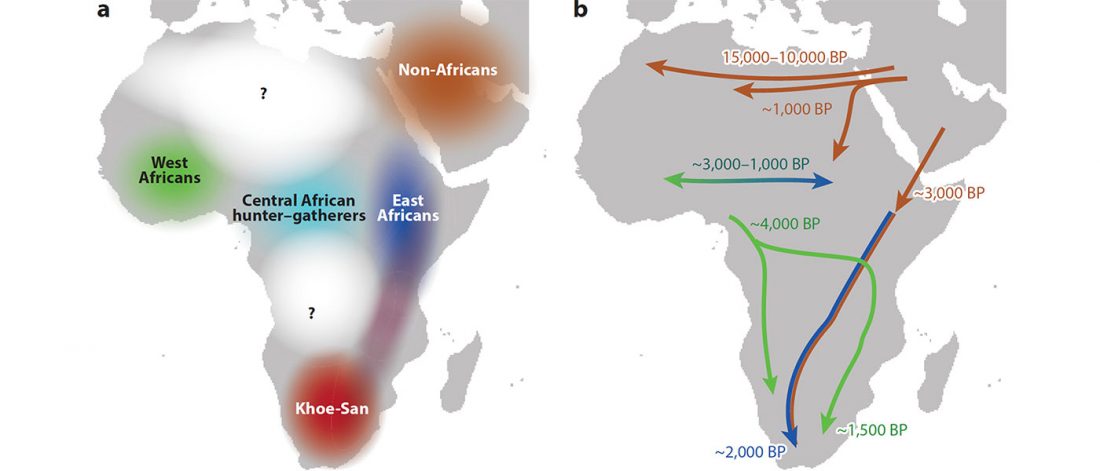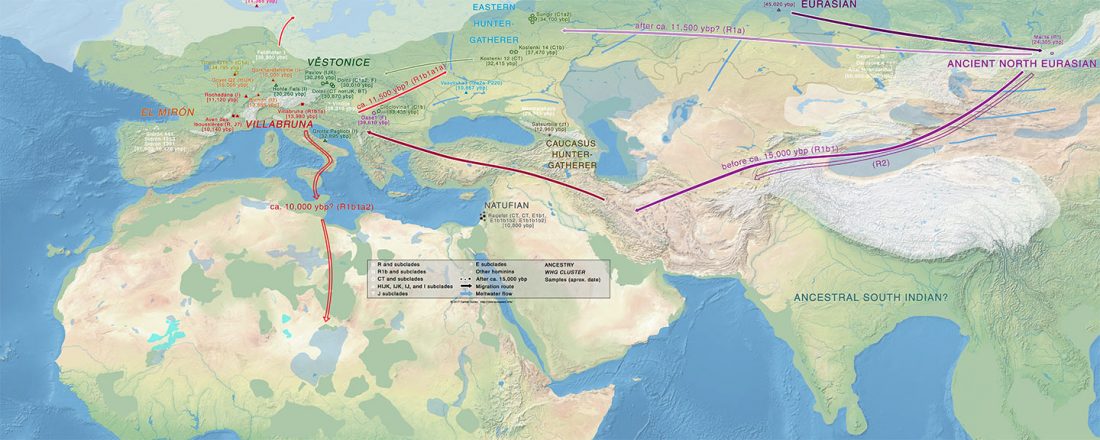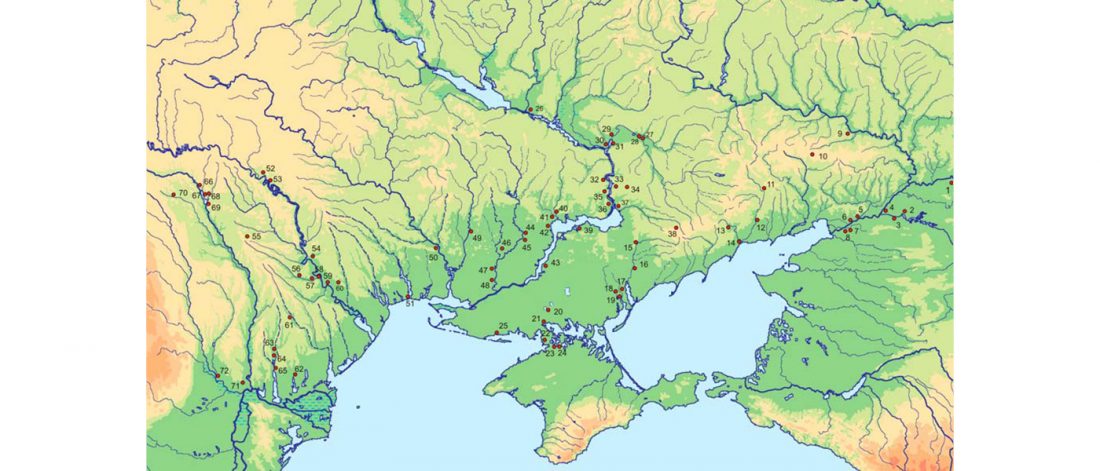BioRxiv preprint now published (behind paywall) Ancient genomes from North Africa evidence prehistoric migrations to the Maghreb from both the Levant and Europe, by Fregel et al., PNAS (2018).
NOTE. I think one of the important changes in this version compared to the preprint is the addition of the recent Iberomaurusian samples.
Abstract (emphasis mine):
The extent to which prehistoric migrations of farmers influenced the genetic pool of western North Africans remains unclear. Archaeological evidence suggests that the Neolithization process may have happened through the adoption of innovations by local Epipaleolithic communities or by demic diffusion from the
…
Read the rest “Ancient genomes from North Africa evidence Neolithic migrations to the Maghreb”
This is a series of posts I wrote at the end of 2017 / beginning of 2018, to answer the wrong assumptions I could read in forums and blogs. I decided not to publish them then, seeing how many successive papers were confirming my theory in a (surprisingly) clear-cut way. Nevertheless, because I keep reading the same comments and personal attacks no matter what gets published even in mid-2018, I have decided to update and publish them. This way I will be able to respond to the “haplogroup R1a – Indo-European association” directly by pointing to any of these posts … Read the rest “Tips for dialogue with those supporting the ‘haplogroup R1a — Indo-European’ association”
This is a series of posts I wrote at the end of 2017 / beginning of 2018, to answer the wrong assumptions I could read in forums and blogs. I decided not to publish them then, seeing how many successive papers were confirming my theory in a (surprisingly) clear-cut way. Nevertheless, because I keep reading the same comments and personal attacks no matter what gets published even in mid-2018, I have decided to update and publish them. This way I will be able to respond to the “haplogroup R1a – Indo-European association” directly by pointing to any of these posts … Read the rest “Haplogroup is not language, but R1b-L23 expansion was associated with Proto-Indo-Europeans”
Recent paper (behind paywall) The Unique Burial of the Ekaterinovsky Cape Early Eneolithic Cemetery in the Middle Volga Region, by Korolev et al. Stratum Plus (2018) Nº2.
Abstract (official, in English):
This is the first time we published the results of a comprehensive study of burial 45 of the eneolithic cemetery called Ekaterinovsky Cape. The burial contains the skeleton of a young man with traumatic injuries of the skull, leg and hand bones of other individuals, skeleton of a young specimen of a domestic goat (Capra hircus) that was abundantly sprinkled with red ocher. Grave goods include three stone
…
Read the rest “The unique elite Khvalynsk male from a Yekaterinovskiy Cape burial”
Open access The genetic prehistory of the Greater Caucasus, by Wang et al. bioRxiv (2018).
The Caucasus Mountains as a prehistoric barrier
I think the essential message we can extract from the paper is that the Caucasus was a long-lasting cultural and genetic barrier, although (obviously) it was not insurmontable.
Our results show that at the time of the eponymous grave mound of Maykop, the North Caucasus piedmont region was genetically connected to the south. Even without direct ancient DNA data from northern Mesopotamia, the new genetic evidence suggests an increased assimilation of Chalcolithic individuals from Iran, Anatolia
…
Read the rest “The Caucasus a genetic and cultural barrier; Yamna dominated by R1b-M269; Yamna settlers in Hungary cluster with Yamna”
Comprehensive review (behind paywall) Tales of Human Migration, Admixture, and Selection in Africa, by Carina M. Schlebusch & Mattias Jakobsson, Annual Review of Genomics and Human Genetics (2018), Vol. 9.
Abstract (emphasis mine):
In the last three decades, genetic studies have played an increasingly important role in exploring human history. They have helped to conclusively establish that anatomically modern humans first appeared in Africa roughly 250,000–350,000 years before present and subsequently migrated to other parts of the world. The history of humans in Africa is complex and includes demographic events that influenced patterns of genetic variation across the continent.
…
Read the rest “Tales of Human Migration, Admixture, and Selection in Africa”
Another short communication by Juliette Blevins has just been posted, A single sibilant in Proto-Basque: *s, *Rs, *sT and the phonetic basis of the sibilant split:
Blevins (to appear) presents a new reconstruction of Proto-Basque, the mother of Basque and Aquitanian, based on standard methods in historical linguistics: the comparative method and the method of internal reconstruction. Where all previous reconstructions of Proto-Basque assume a contrast between two sibilants, *s, a voiceless apical sibilant, and *z a voiceless laminal sibilant (Martinet 1955; Michelena 1977; Lakarra 1995; Trask 1997), this proposal is unique in positing only a single sibilant *s.
…
Read the rest “The Proto-Indo-European – Euskarian hypothesis”
A commenter in a previous post left a reference to an oral communication by Aleksander Khokhlov – shared in a Russian forum on genetics – , from the XIV Conference on Samaran Archaeology, 27-28th January 2018 (still publicized in the Samaran Archaeological Society).
NOTE. You may know Khokhlov as a palaeoanthropologist, part of the Samara Valley project, like David W. Anthony. See the project referenced here, or their recently published book.
Here is my translation of the reported summary (emphasis mine):
Khokhlov, A.A. Preliminary results of anthropological and genetic studies of materials of the Volga-Ural
…
Read the rest “Haplogroup R1b-L51 in Khvalynsk samples from the Samara region dated ca. 4250-4000 BC”
Local cultural settings and transregional phenomena: on the impact of a funerary ritual in the Lower Danube in the 4th millennium BC, by Frinculeasa & Mirea, In: Buletinul Muzeului Judetean Teleorman, Seria Arheologie, 9, 2017, p. 75-116.
Interesting excerpts (emphasis mine):
1. In the area under discussion, around 4300-4200 BC – a chronological segment marking the evolutionary peak of ‘Old Europe’ (Anthony 2007: 225), represented by the Cucuteni A/ Tripolie BI, Aldeni-Bolgrad, Gumelniţa-Karanovo VI cultures – the first tumular burials appeared (Govedarica 2016: 85). However, flat burials, marked by the existence of some allogeneous elements in the local
…
Read the rest “The Lower Danube during the Eneolithic, and the potential Proto-Anatolian community”
